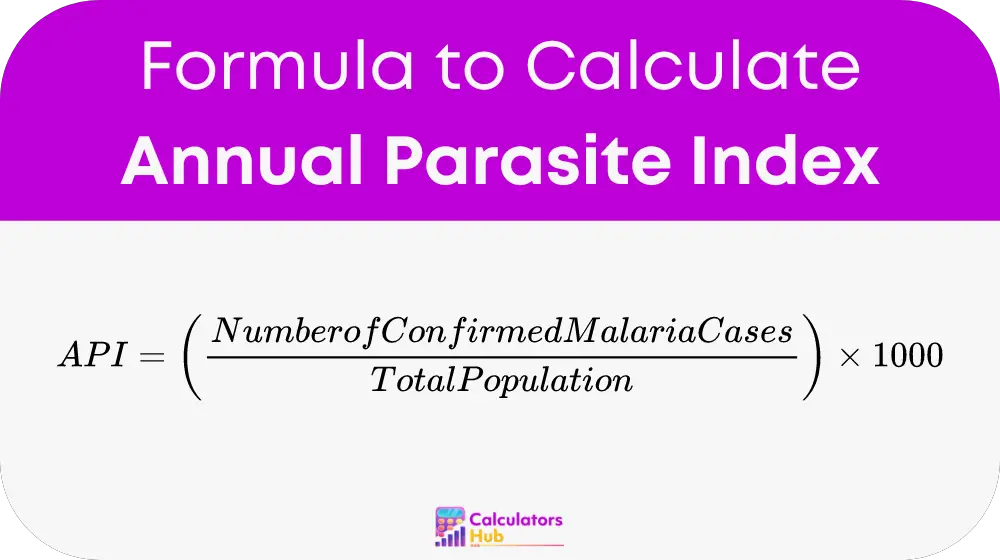The Annual Parasite Index (API) Calculator is a fundamental tool used by epidemiologists and public health officials to measure the incidence of malaria within a specific population over a year. This index is crucial for assessing the severity of malaria in different regions, enabling targeted malaria control and eradication efforts. The API provides a standardized metric to compare the disease burden across different times and geographies, facilitating effective resource allocation and intervention strategies.
Formula of Annual Parasite Index Calculator
The API is compute using a simple formula:

Key Components:
- Number of Confirmed Malaria Cases: This is the total count of malaria cases that have been confirm through diagnostic testing within the year.
- Total Population: The population of the area under study.
This calculation results in the number of confirmed cases per 1,000 people, which standardizes the measure for easy comparison between different population sizes and densities.
Steps to Calculate the API
- Gather Data: Obtain the total number of confirmed malaria cases for the year from health surveillance data.
- Population Figures: Determine the total population of the area being studied, which can typically be obtained from recent census data.
- Apply the Formula: Use the collected data in the formula to calculate the API.
Table of General Terms
To assist understanding, here’s a table of terms frequently searched in relation to the API:
| Term | Definition |
|---|---|
| Annual Parasite Index (API) | A public health metric used to measure the incidence of malaria per 1,000 inhabitants in a given area over a year. |
| Confirmed Malaria Cases | The number of malaria cases that have been confirmed by laboratory tests or clinical diagnosis within a specified period. |
| Total Population | The number of people living in the area where the API is being calculated. |
Example of Annual Parasite Index Calculator
Scenario: A region with a population of 50,000 people reports 500 confirmed cases of malaria in a year.
Calculation:
- API = (500 / 50,000) * 1000 = 10
This means there were 10 confirm cases of malaria per 1,000 people in the region during the year, indicating the level of malaria transmission and helping guide public health responses.
Most Common FAQs
The API helps identify high-risk areas needing targeted interventions and monitors the effectiveness of ongoing malaria control efforts.
Population growth or decline can significantly affect the API, as the index is population-dependent. Accurate and current population data are crucial for reliable API calculations.
While the API is a valuable indicator, it should be use in conjunction with other data such as mosquito density, climate conditions, and local health infrastructure capabilities for a comprehensive malaria risk assessment.